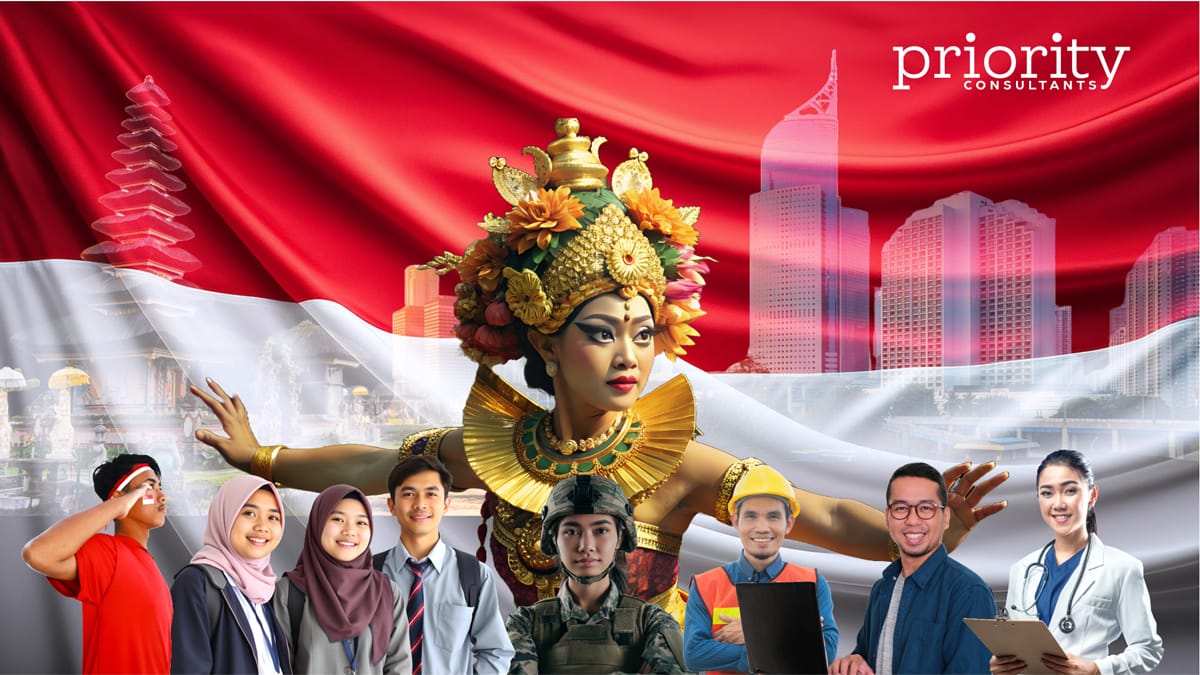
As we mark our 12 years in Indonesia for Priority Consultants, it feels like an appropriate moment to step back and reflect on all of the changes and development that Indonesia has gone through over the last decade.
Today, when we speak of Indonesia, we talk about its vibrant digital landscape and the colourful, young neo-culture that has embraced all that is fundamentally Indonesia—celebrating diversity, humour, arts, design, and music. One feels that this is a country guided by the inclusive and existential Pancasila societal code, which has become even more accepting and culturally diverse. Yet, at the same time, Indonesia is a nation in a hurry and eager to catch up with globalisation and consumerism.
When we first began operating in Indonesia, working on the re-launch of a true blue (or green fields) Indonesian dairy brand, the country was one of three key markets for the global launch of the latest Blackberry. The Blackberry event in downtown Thamrin was attended by over 150 journalists, influencers, partners and distributors. Indonesia was unique in the region, with much of its social interaction happening on Blackberry messenger!
Today, Apple, Samsung, Honor (Huawei), among other Chinese brands reign supreme in an almost binary struggle between Apple iOS and Android.
The country has recorded a steady 5% annual growth since the heady days of pre-pandemic expansion. Indonesia is one of the more dynamic e-commerce and digital economies in the region, estimated to be worth USD133 billion by 2025.
Amidst this backdrop, we are aware of areas that could benefit from strengthening private-public partnerships and the development of infrastructure and resources to cater to a growing, young, and vibrant population. Investments in metro transportation, airports, telecommunication, e-commerce, and supply chain/port facilities are the norm today, but much remains to be done to assuage an insatiable consuming population.
Over the years, we have seen an influx of technology enterprises looking to leverage the growth in Indonesia. Some of the biggest investors in the country are the US, Europe, and India, while Chinese firms are engaged in Chinese government-backed One Belt One Road Initiative (BRI) infrastructure projects in power generation, intercity transportation, agrichemicals, ports and metro transportation services.
As foreign investments have increased and continue to grow in Indonesia, the task of developing the domestic technology and industrial landscape has become a central theme for the Joko Widodo government. The government has thrown its weight behind interesting initiatives including Start-up Studio and the Gerakan Nasional 100 Start-up programme for Digital, designed to encourage tech start-ups. These have been long-term strategic programmes aimed at driving uniquely Indonesian cloud and mobile commerce companies like Gojek, Tokopedia, Bukalapak, Akulaku, and Traveloka.
Much like these exhilarating developments, we have seen significant changes in the local communications and media landscape. The advent and rise of social media have not only displaced traditional mediums but also first-generation social messaging. Today, many of our press friends juggle between print, social, and online broadcast media in the country.
Launches are no longer focused on features, speeds, feeds, and bytes but on how they will help consumers, on a fundamental and aspirational level. Stories that change or influence the average Indonesian lives in first-tier metros as well as secondary rural centres across Indonesia’s diverse archipelago now take centre stage.
In working with organisations like the Coca-Cola Foundation, USAID, and Herbalife, we engaged Indonesians in key metros of Bandung, Jakarta, Surabaya, and Denpasar on a platform of enabling social groups to realise economic and social mobility. These stories were a fundamental tenet of Indonesian self-help groups and NGOs, but interestingly they resonated with the wider media landscape and influencers. Interestingly, regional think tanks now rank Indonesia among the highest in addressing social and environmental concerns across Southeast Asia.
This growing awareness and demand for content have shaped the Indonesian media landscape, which has enjoyed press freedom since the journalism reforms of the post-Suharto era in 1999. While there is much to be done to improve the media and communications standards, the expanding communications talent pool, increased awareness, and better access to technology infrastructure are propelling the country into the next millennium.
We are excited about the future of Indonesia, a country of more than 1,000 ethnic and indigenous groups spread across over 17,000+ islands. We are proud to be part of Indonesia and look forward to continued growth.
#TeamIndonesia.